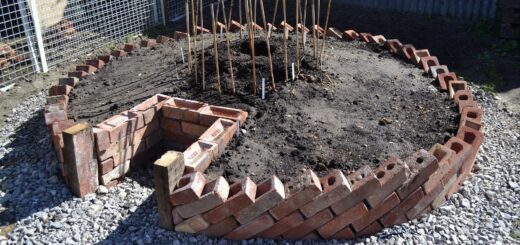Subtropical Garden Planning for Melbourne and Victoria
If you live in Melbourne, it is still possible to grow a range of tropical and subtropical fruit varieties. The key to success with tropical and subtropical fruit is creating the right microclimate in your garden that will provide a warm, frost-free environment for optimal growth, flowering and fruiting, as well as providing a well-drained but moist soil. The right climate can be created using a Hothouse or a well designed microclimate.
Winter temperatures will determine if tropical and subtropical plants will survive, while summer temperatures and the number of growing days will determine growth and fruiting success. Most subtropical plants will survive temperatures as low as -1 degrees Celsius while tropical plants prefer the lowest temperature to remain between 4 and 10 degrees Celsius.
What is a microclimate?
A microclimate is the climate of a small or restricted area, in contrast with the climate of the surrounding area. The climate of a particular area is affected by many factors such as topography, soils and vegetation. Aspect (the orientation in relation to the sun) is also important to consider when planting crops.
There are many ways to create a warm microclimate on a suburban scale in your backyard. The air temperature can be increased by the use of thermal mass to absorb and store heat. A simple example of this is the warmth a north or west facing brick wall will absorb and then slowly radiate into the surrounding area. Citrus trees often do well when planted near a brick wall for this reason and, similarly, an avocado or custard apple will benefit. Paving, rock terraces or even gravel can have a warming effect on the air temperature in your garden. White gravel will reflect light and heat onto walls and plants, elevating the temperature.
It is important to prevent wind from removing the air once you have warmed it. Using dense plantings, fences and walls to block, or slow wind will ensure that the air temperature remains warmer for longer. Strategically planted deciduous trees have the advantage of allowing winter sun to penetrate into the area to warm the soil, while still reducing the impact of the wind.
Swimming pools, water tanks (as thermal mass) and ponds can also assist with the creation of a frost-free microclimate. Water will absorb heat and cool off slowly and also impact on the surrounding temperature through evaporation, increased humidity, and reflected light. Even a small pond can have a warming effect on the temperature of an area.
Most sub tropical plants like deep rich, well drained soil with lots of mulch, and no waterlogging.
Of course an easy way to create a microclimate is by having a green house or similarly protective structure that can house tropical plants, protecting them from cold weather.
Subtropical plants
Avocado (Persea americana)

Avocadoes do extremely well in Melbourne and are tolerant of the cold although not of frost when young. They prefer a free-draining soil, as they are inclined to root-rot, so ensure that your soil does not become waterlogged. Avocadoes should be planted in a sheltered and frost-free position with some protection from the hot afternoon sun. Mulch well to protect the shallow roots and feed with well-rotted poultry manure. Melbourne varieties include Fuerte, Wurtz and Reed.
Babaco (Carica pentagona)
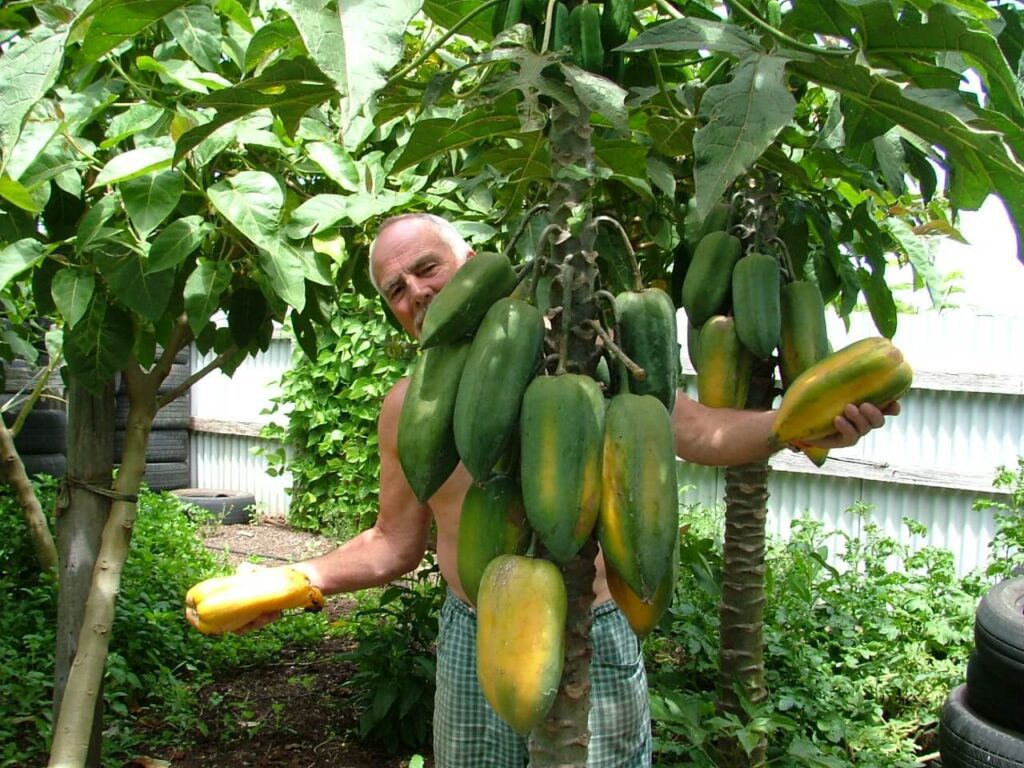
The babaco, which is a type of paw paw that you can grow in Melbourne
The babaco is related to the pawpaw and is great option for cooler climate paw paw lovers. It produces abundant sweet, juicy fruit along the trunk of a self-fertile small tree that reaches about 2.5m. It needs a frost-free position with some protection from hot afternoon sun and plenty of mulch to keep the shallow roots cool. Babaco trees may lose their leaves in winter.
Cherimoya / Cold Climate Custard Apple (Annona cherimola)

Cherimoya / Cold Climate Custard Appl
An elegant semi-deciduous tree that is useful as a shade provider. The flesh can be eaten fresh or made into sorbet and smoothies, although the seeds are said to be toxic, so remove those first. The cherimoya requires a free draining soil with consistent moisture and good wind protection. The tree can be pruned to establish a strong framework when first planted and requires feeding with compost and mulch to provide nutrients.
Curry Leaf (Murraya koenigii)

Curry Leaf
The curry leaf tree is an attractive, weeping tree that will reach about 2m in Melbourne. It requires a sunny, protected, frost-free position and, although evergreen, may lose leaves over winter in colder areas. It requires protection from frost and a free-draining but moist soil. The leaves are used in curries and other dishes, either dried or fresh.
Macadamias
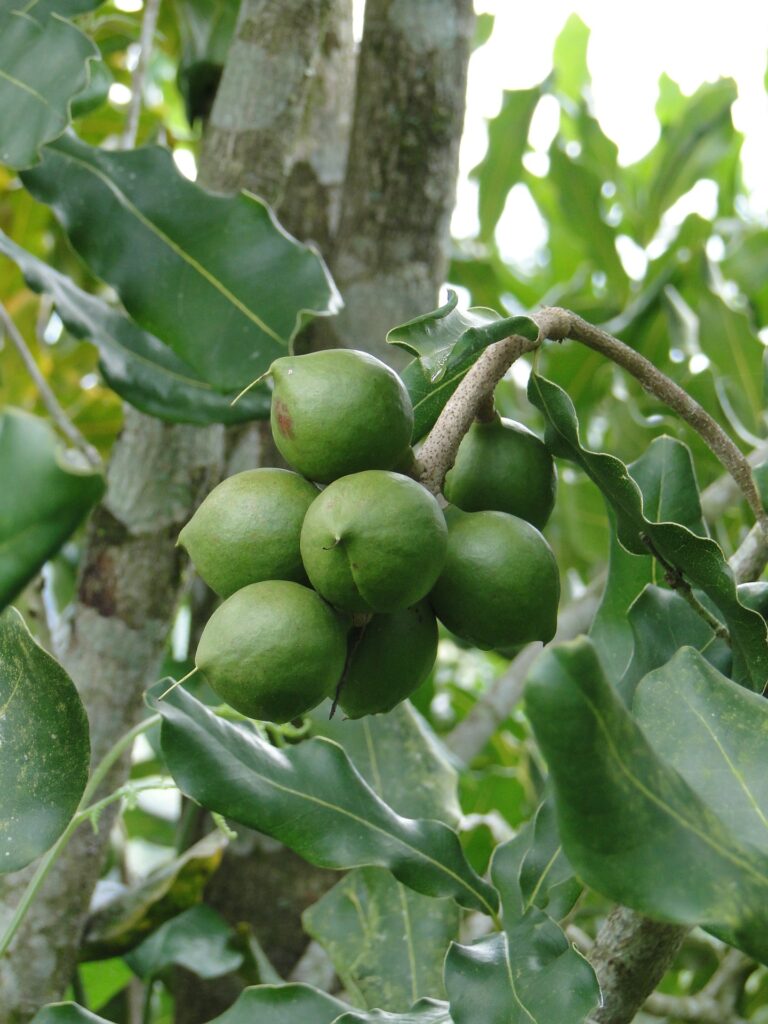
Macadamia nuts
Macadamias will grow and produce nuts in Melbourne, they just won’t grow as tall as they would in the northern states, and they will grow in most soil types as long as the soil is well drained – they dislike waterlogged soils. Being subtropical rainforest understorey trees, they will grow in light shade or full sun, and are fairly cold tolerant but need protection from strong winds and frost.
White Sapote (Casimiroa edulis)
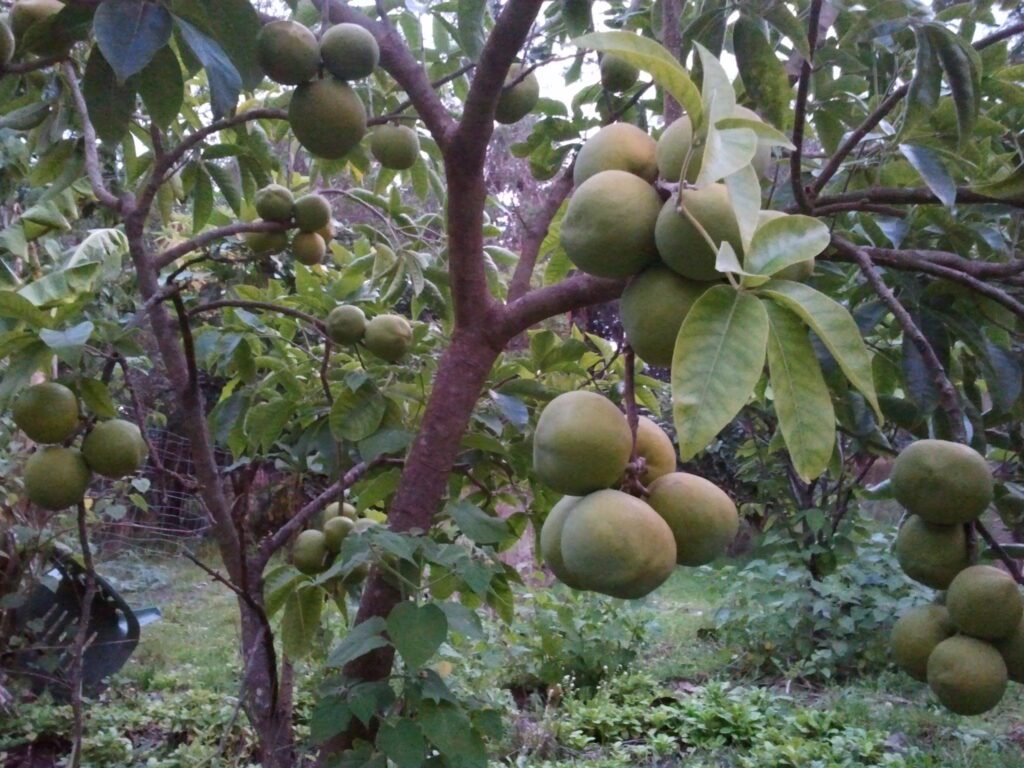
White Sapote
The white sapote has similar growth requirements to a lemon, so if your lemon is thriving you could try growing a sapote. This partially self-pollinating tree produces a round, green fruit, similar in size to an orange, with pale custardy flesh. It requires a warm sheltered position with good drainage. Feed with plenty of organic matter and fertilise with manures or blood and bone. Ensure that it does not dry out over summer but do not allow it to become waterlogged. With diligent pruning of the shoots the tree can be kept as short as 2-3m. Harvest fruit from March to May.
Tropical Plants (slightly harder to grow and thrive)
Bananas (Musa spp.)
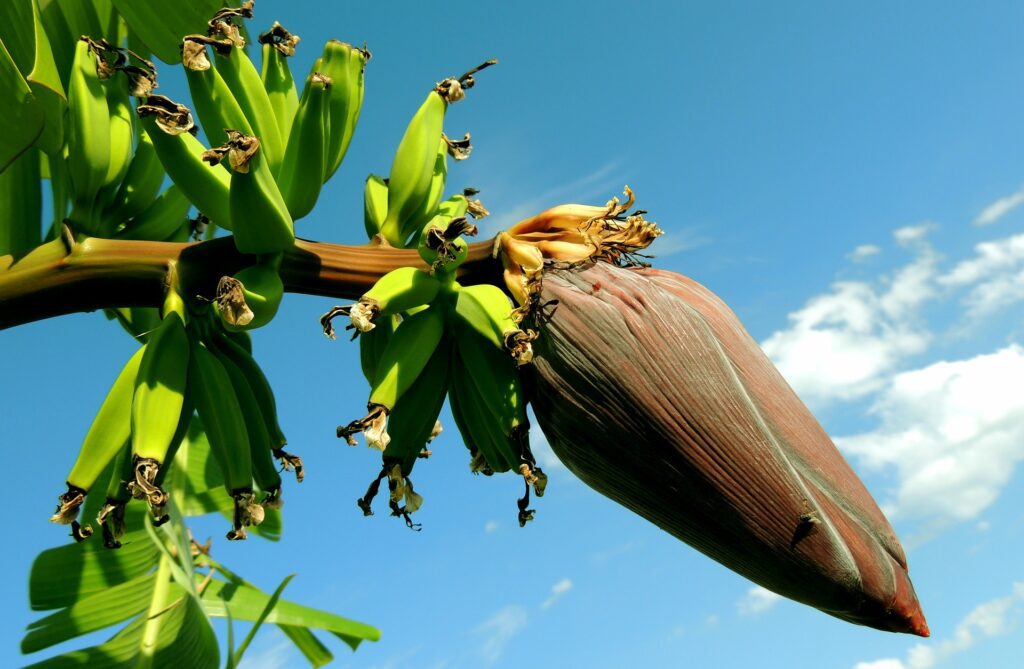
Bananas
Bananas in Melbourne will take longer to fruit, (up to two years), than when grown in the tropics. A well drained soil is necessary, as the plant can rot at the base, but it needs to be rich in organic matter, so add plenty of well-rotted compost and mulch well. The roots are mat-forming so prepare the soil in a wide rather than deep fashion. It prefers a frost-free, north-facing position with little or no wind. The types of bananas available for growing will be either a Cavendish or Lady Finger variety.
Dragonfruit or Pitaya (Hylocerus undatus)

A single dragon fruit
A highly ornamental fruit with brilliant pink skin and flesh dotted with tiny black seeds. The fruit is borne on an epiphytic cactus and it has a crunchy sweet texture. The cactus has aerial roots and will adhere to a trellis or wall, reaching about 3m in optimal conditions. Grow the dragon fruit in a sunny, frost-free position with a moist free-draining soil. It will grow well in a pot if an adequate climbing support is provided. It fruits during summer and autumn. If cropping is poor try hand-pollinating the flowers and feeding with a seaweed fertiliser.
Mango (Mangifera indica)

Mangoes
A large and dense shade tree in tropical climates, the mango needs a bit of loving in Melbourne. Once it is established it will tolerate light frost (-1 degree Celsius) but until then it needs protection during the colder months. Provide a slightly sandy, free-draining soil and fertilise with blood and bone until it starts to bear fruit, in about 4 to 10 years. They may be pruned to establish a strong framework when first planted. Grafted mango varieties Nam Doc Mai, Kensington Pride and R2E2 are some of the varieties suitable for Melbourne
Summary
Design a warm, frost free microclimate with lots of reflected light, stone or brick wall to retain heat, deep well drained soil, manure and compost applications. Maintain lushness with companion plants such as Canna lilies, sweet potato and comfrey, and and insect attractors like acacia floribunda. Slow down breezes to enable humidity, by providing screens like bamboo or climbers on a trellis. A pond is a great idea as well.
This article was collated from the following original resources: Bulleen Art & Garden, Gardening Australia and Gardenworld.


